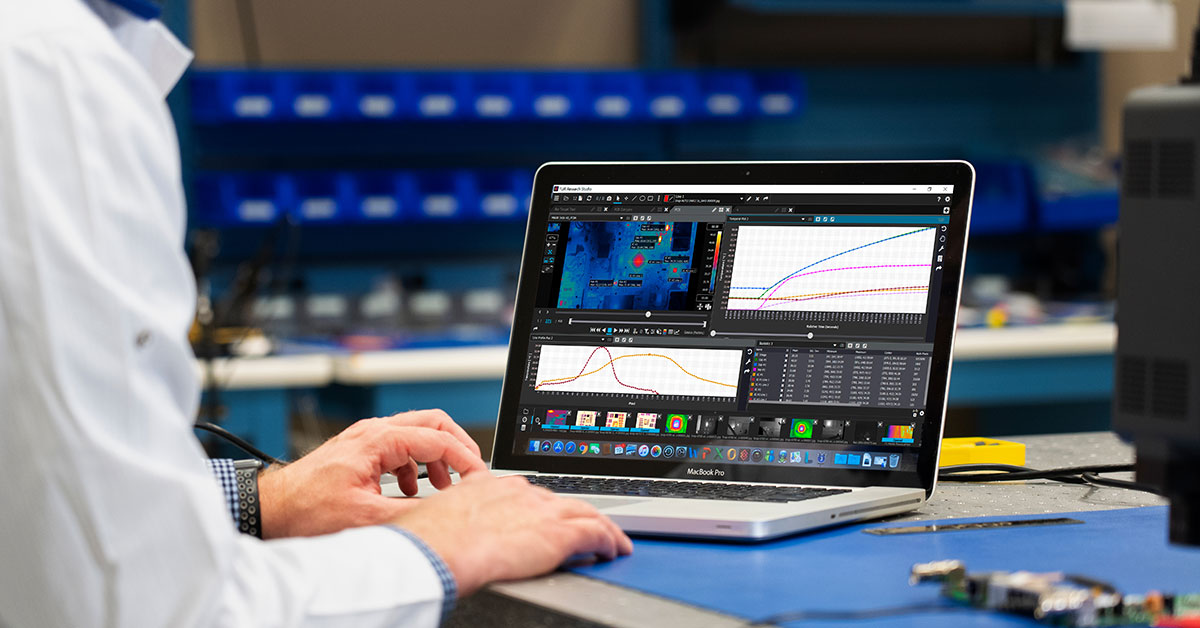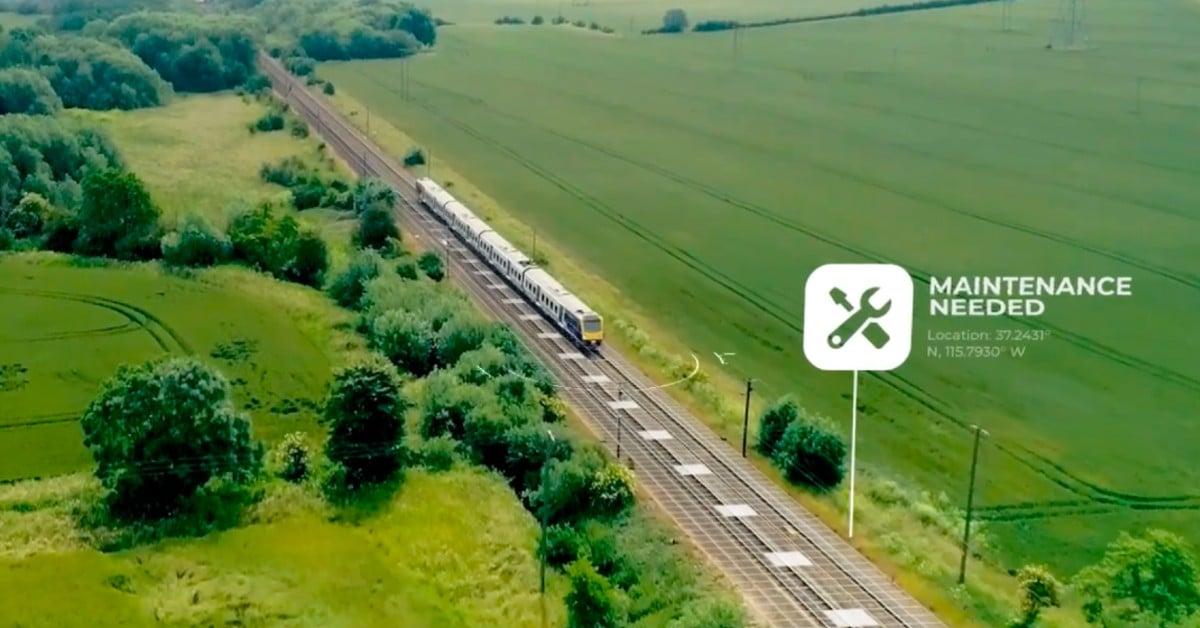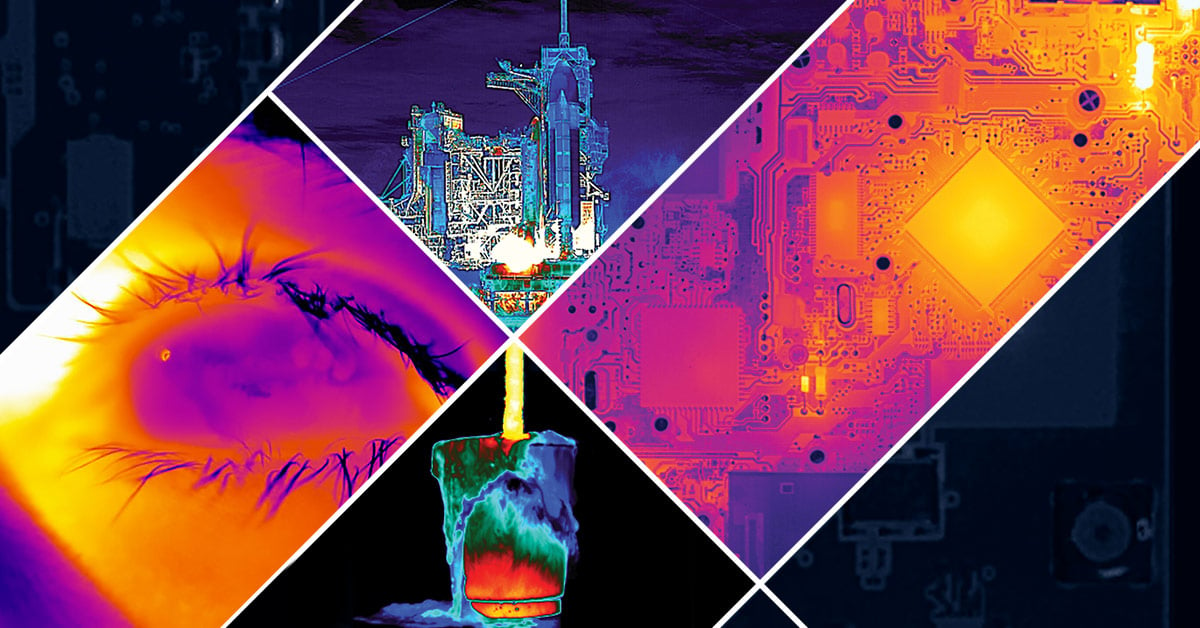Added camera control for next-generation thermal imaging cameras with FLIR Research Studio v2024.05

FLIR Research Studio is an incredible tool for researchers to easily control, view, record, analyze, and share thermal data from FLIR cameras. Research Studio saves the researcher time through an easy to use interface that works reliably with many different cameras. Our latest rollout of new features makes it our most intuitive and easy-to-use iteration to date.
Added Camera Support for the FLIR A6301 and G620a
The most exciting part of this release is the added support for the powerful new A6301 24/7 Cooled Automation Camera and the G620a highly sensitive 24/7 fixed mount optical gas imaging camera.
Whether you use the G620a for consistent leak monitoring with unmatched image clarity, or the new A6301 advanced thermal camera for 24/7 process monitoring and quality control, your data-driven cost savings will be more reliable and easier to implement with Research Studio v2024.05 and the Science Camera SDK.
The industry-leading linear cooler in the FLIR A6301 marks a potential revolution for the manufacturing industry in particular, as it ensures that processes which require the ability to capture fast-moving targets with high sensitivity can do so with optimal insights and minimal cost through the long life 27,000 MTBF FLIR Linear Cooler. Research Studio enables teams to quickly bring up the camera for testing before integration into a production line with Science Camera SDK or the GigEVision and Genicam Compatible interfaces.
User Experience Updates
We are always responding to customer feedback to make the user interface of Research Studio as seamless as possible. Below are some user improvements implemented in 2024.05
- Live or recorded imagery is no longer blocked by Isotherm and Segmentation editing popups when viewing a layout with more than one frame. This provides a more streamlined experience for image optimization.
- Post-trigger and external sync are now possible in software, with Soft Abort and Hard Abort options in the recording interface.
Performance, in perpetuity
Interested in learning more about our yearly subscriptions and perpetual licenses?
Simply fill in the form and an expert will be in touch.
___________________
Previous updates
FLIR Research Studio is a vital tool for operators to clearly quantify thermal data and foster collaboration with colleagues, whether they’re across the corridor or the globe - and our latest rollout of new features makes it our most intuitive and easy-to-use iteration to date.
New features to increase evidence-based insights
Your post-data analysis just became even more efficient. Sharing impactful, infrared temperature data has never been easier than with the new and updated FLIR Research Studio v2024.03. We’ve implemented a full-scale redesign of the playback bar to simplify your workflow, and we’ve added the option to work in frames or time - and so much more. It’s your data, your rules.
Playback, perfected: your new and improved workflow
Users can now set the rate of their data playback, ranging anywhere from 0.01 Hz to 60 Hz - depending on your ideal application and, of course, the limitations of your computer’s performance.
Other key improvements include extra details being visible for an actively open file, including Mode, Presets, Resolution, Duration, and First and Last Frame Rate.
Users now benefit from the ability to set start, current and end frames all at once - allowing for more time interpreting data and less time processing it. Similarly, operators can choose what specific time format they wish to display - increasing the access and interpolation of data.
Setting a playback loop
Establishing an easy-to-monitor playback loop is now an expedited process that’s easier to manage with fewer steps; users have the option to set Start and End bounds with type-in fields, as well as the alternative to set a current frame or reset to the previous first/last frames model.
We’ve also made isolating the specific frame you need simpler; now, simply hold down the ‘frame forward’ or ‘frame back’ button to toggle between adjacent frames.
Depending on your preferences or particular testing scenario, FLIR Research Studio now allows you to display data in absolute or relative time in addition to frame number. This includes IRIG-formatted time if your thermal camera supports it. When editing the start, current or end time of a frame, users will also note that the software automatically chooses the closest time available to ensure the most consistent data is presented in the most linear format possible - further helping to accelerate your thermal analysis.
The playback rate is now also visible on the Imagery View Module, making referencing information while viewing data virtually effortless.
Set default playback units
Critically, there is now the additional functionality to set default playback units in the Application Settings - Global Tab. This attention to chronology doesn’t end there; now, when users add a new Temporal Plot, the X-axis starts with the units from the Imagery View’s playback settings (i.e. Frames, Relative Frame or Absolute Time). This negates the need to manually configure new footage and creates a more streamlined flow of data.
ROIs are now automatically resized when the camera’s frame size changes, giving users more flexibility and less need to manually configure elements. The Ax5 Camera Controller also has improved wording for the gain/temperature in the modal dropdown menu - further clarifying use and intent for operators.
PERFORMANCE, IN PERPETUITY
Interested in learning more about our yearly subscriptions and perpetual licenses? Simply fill in the form and an expert will be in touch.
______________________
Update v3.2
The latest iteration of FLIR Research Studio comes supercharged with more features and functionality than ever before. It enables you to concisely quantify data and easily share with colleagues anywhere, making your research more efficient and impactful.
CONNECT AND COLLABORATE
Users of FLIR Research Studio v3.2 can now connect and collaborate instantly with their global colleagues, thanks to the integration of the FLIR online cloud platform Ignite and the Ignite Sync Desktop app. This makes the process of sharing data easier than ever. Not only that, but utilizing FLIR Ignite basic PDF reports can be created after a test. This allows researchers to easily create reports to send to management and for record keeping.
It also includes the ability to record visible and infrared fusion videos from all compatible devices, adding even greater functionality to FLIR cameras.
Expanding on the improved operation of the FLIR A50/A70 R&D Kits and A400/A500/A700 Science Kits, .ATS files now contain the visible and infrared data in one single file. This means that you can effortlessly acquire, save and edit multifaceted images and videos that span the visual and infrared spectrums for a faultless fusion of visible and infrared imaging that adds information to your data with every pixel.
WHAT ARE THE LATEST FEATURES? AN AT-A-GLANCE UPDATE
We’re implementing continuous software refinements to enhance the scope of FLIR Research Studio and the user experience - and this latest iteration is no exception.
The newest capabilities of the improved FLIR Research Studio v3.2 include:
- Video capture and recording of visible spectrum and infrared (IR) footage with both image streams stored in a single .ATS file
- Users have the ability to store radiometric .jpeg images online in FLIR Ignite’s cloud storage.
- Seamless FLIR Ignite Sync directory and user interface integration
- Filters are now drag-to-reorder in the Imagery View Module, ensuring easier, more intuitive editing and consistency with the Measurement Functions’ screen
- In the Metadata Module, units are now added to applicable metadata fields to ensure clearer quantification of data
- Essential updates to the User Manual; it now guides users through the Install process with greater accuracy, with a dedicated reminder for the Frame Grabber functionality, critical license testing information, Ignite Sync Integration and a customer support section.
WATCH AND LEARN
Watch Matthew Hasty, Product Manager at FLIR Systems, explore these cutting-edge updates using a 12µm pixel pitch camera and high power microscope to observe a printed circuit; using it and FLIR Research Studio, he is able to visualize and obtain even the most minute components of the board with clearly quantifiable data. He then can easily share the data with colleagues around the world using FLIR Ignite Sync.
Update v3.1
Data redefined: Create revealing research by fusing optical and infrared visuals with FLIR Research Studio 3.1
Unexpected variables and gaps in datasets can create a huge problem for researchers. Data is information in visible form, so what we aren’t able to observe, we can’t account for.
Even the most demanding datasets can now get a fully-fledged upgrade with the latest iteration of FLIR Research Studio. Version 3.1 enables operators to see more than ever before, fusing visible imagery and infrared data to provide a rigorously detailed analysis of virtually any environment.
What are the latest features?
While FLIR Research Studio 3.0 gave users the power to create a completely bespoke analysis by comparing module data from multiple cameras, 3.1 takes it one step further.
The ability to work in native languages and more efficiently share files is still present - but with pivotal upgrades. Users can now enjoy the major functionality changes from the previous update, such as utilizing measurement functions to trigger recordings based on regions of interest, the User Calibration Tool or the emissivity calculator, but with the unparalleled addition of clearer visuals on essential data.


IR + visible dual image streaming provides unique ways to view data
Clearer visuals for more distinct data
We’ve just upped the ante - and the data visualization capabilities - for researchers globally. Now, operators can render more insightful data with no change to their inspection procedure.
The FLIR A50/A70 R&D Kits and A400/A500/A700 Science Kits can now combine visible imagery with infrared readings to reveal a multifaceted image that spans the visual spectrums. The end result is a crisp fusion of visible and infrared imaging that adds information without detracting detail.
To benefit from this new functionality, operators simply connect their FLIR camera over RTSP and select ‘IR + Visible’ in the camera controller. Then the FLIR MSX® (Multi-Spectral Dynamic Imaging)/Fusion options can be viewed under image enhancement. The degree images are fused can be dialed up or down; select ‘fusion’ and ‘edit’ from the FLIR Research Studio interface to alter.

Fuse thermal and visible data multiple ways in real-time
Flexible storage solutions: new workspace features
Workspaces in FLIR Research Studio v3.1 now support relative paths. This means less disk space is used when saving files and makes sharing file URLs easier - especially when working from a large or nested directory.
Another feature is that workspaces will automatically remember window size, so researchers can reload the program or dip in and out of data without needing to re-size frames. Users can also drag and drop workspaces into the app, allowing a simple one-step process to set up FLIR Research Studio for different users.
Reduced set-up times and huge speed increases
FLIR Research Studio now supports Windows 11 and macOS 13 – Ventura.
The essential R&D software automatically checks for new versions upon startup, with users able to download the installers with a direct link. This means that you’ll know when the latest features become available - but, critically, you can delay an update if you have pressing work to do.
Users will also benefit from a significant speed increase when adding or moving modules or when changing the layout of their research projects. This means that connecting multiple cameras, plots, and analysis modules is more efficient than ever before - giving you more time to absorb the data itself, rather than trying to access it.
Other improvements include enabling users to copy a standard ROI layout to another image, video or livestream - which reduces the set-up time for researchers when analyzing multiple similar objects.

Bug fixes in FLIR Research Studio 3.1
Further augmentations include bug fixes to streamline user experience. These include:
- Workspaces will prompt users to reload the workspace when an open workspace file is dragged onto the app, preventing redundancies
- Dragging a file into the app, but on the image area of the Imagery View Module, will now trigger the file to open
- RCal now prevents opening files with unrecognized extensions
- When loading or clearing ROIs, Global ROI Listing was not updated, and Measurement Functions were not getting recompiled; resolved
- In the Statistics Module, the Delta measurements for the number of pixels [Num Pixels] no longer underflows to a larger number.


